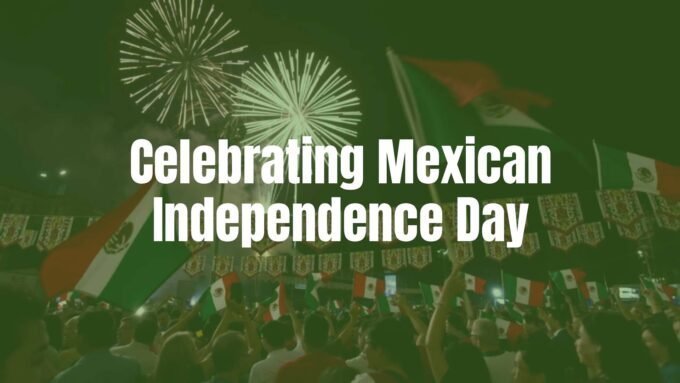Mexico is known for its bright colors, deep history, and beautiful scenery. This country has many sights and activities for all kinds of travelers. If you like learning about the past, relaxing on great beaches, exploring the outdoors, or enjoying busy city life, Mexico has something for you. The country is one of the most popular places in the world for tourists. Its long coastlines, tall mountains, and energetic cities show a mix of European and native Mesoamerican culture, making a trip here full of new discoveries and experiences.
Why visit Mexico for tourism?
Mexico stands out because it gives visitors a lot more than a typical vacation. You can enjoy sunny beaches, taste amazing food, and take part in local festivals filled with music and art. Mexico has peaceful nature spots, exciting cities, and historical places that tell stories from long ago. Ancient ruins blend with modern life, offering an unforgettable atmosphere for tourists from around the world.
What makes Mexican tourist attractions unique?
Mexico’s main draw is how different and rich its attractions are. While some places focus only on beaches or history, Mexico offers both, plus much more. Some sites, like Mayan and Aztec ruins and colonial cities, are recognized by UNESCO for their value. You can visit places like Chichén Itzá, famous for its ancient pyramids, or walk through colorful colonial towns such as Guanajuato and San Miguel de Allende. These spots are just as popular as sunny places like Cancún and Puerto Vallarta, giving you options between culture and relaxation.

Mexico is also full of natural wonders, from deserts to rainforests. Nature lovers can spot wildlife, hike, or dive into the sea. The country’s culture mixes native and Spanish influences, which you can see, hear, and taste-from food and music to art and dance. Each visit is more than a holiday-it’s a chance to experience living traditions and history in action.
Main types of tourist attractions in Mexico
Mexico has many types of attractions. Some focus on ancient history, others on nature. There are bustling cities, peaceful towns, and perfect beaches. Each area has its own style and charm, so every visit is different and exciting.
UNESCO World Heritage Sites in Mexico
Mexico has many places protected by UNESCO because of their cultural or natural importance. These spots include ancient ruins, colonial cities, and nature reserves. Some key examples are:
| UNESCO Site | Location | Type |
|---|---|---|
| Historic Center of Mexico City | Mexico City | Colonial/Ancient Relics |
| Chichén Itzá | Yucatán | Mayan Ruins |
| Uxmal | Yucatán | Mayan Ruins |
| Palenque | Chiapas | Mayan Ruins |
| Campeche | Campeche | Colonial City |
Archaeological and historic sites
Mexico is filled with old sites from the Aztec, Maya, Olmec, and other native cultures. Some must-see places are:
- Teotihuacan near Mexico City is known for its giant pyramids that visitors can still climb.
- Tulum’s Mayan ruins sit on a high clifftop above the Caribbean Sea.
- Palenque is set in the jungle, still partly hidden by trees, and shows advanced Mayan art and building.

Colonial towns and cultural centers
Mexico also has many towns showing Spanish influence from centuries ago. For example:
- Guanajuato is famous for its narrow streets and colorful buildings.
- San Miguel de Allende draws artists and offers a lively cultural scene.
- Morelia has hundreds of old buildings in its city center.
- Oaxaca City is known for its traditional markets and great food.
Natural wonders and places for ecotourism
Nature fans love Mexico’s rich plant and animal life:
- The Copper Canyon in Chihuahua is deeper than the Grand Canyon and is great for train rides and hiking.
- The Yucatán Peninsula has over 6,000 cenotes, or deep natural pools, perfect for swimming and diving.
- Mexico’s many national parks and nature reserves protect animals like monarch butterflies and whales.

Beach and coastal destinations
Mexico’s coastlines stretch along the Caribbean, Gulf, and Pacific. Top beach spots include:
- Cancún and Riviera Maya (Playa del Carmen and Tulum) in the east known for sandy beaches and clear water.
- Puerto Vallarta on the west coast, which has city life, beaches, and nearby mountains.
- Los Cabos in Baja California, perfect for diving, whale watching, and luxury travel.
- Isla Holbox, a quiet island with peaceful beaches and glowing plankton.
Festivals and local celebrations
Mexico is famous for its lively festivals. Some big examples:
- Guelaguetza in Oaxaca features music, dance, and traditional costumes every July.
- Día de Muertos (Day of the Dead) is celebrated across the country with parades and offerings.
- Mariachi music and folk dances are popular at festivals and in squares.
Mexican cooking is also part of UNESCO’s list of important world traditions, and festivals are a great time to try special dishes.
Most popular cities and regions to visit
Mexico’s best-known places each have their own style. Some are big cities filled with history, others are beach resorts, and some are small towns full of character.
Mexico City: Historic center and culture
Mexico City is the capital and a busy mix of old and new. The city’s central area is a UNESCO World Heritage Site with over 1,400 historic buildings. You can see the National Palace, the big cathedral, or the old Aztec Templo Mayor. The city has many museums, including the popular National Museum of Anthropology and the Frida Kahlo Museum. There are parks, restaurants, street food, and a thriving arts scene-you’ll always find something happening.
Yucatán Peninsula: Cancún, Chichén Itzá, Mérida, Tulum
The Yucatán is probably Mexico’s best-known region for tourists. Cancún’s beaches, Chichén Itzá’s pyramids, Mérida’s colonial history, and Tulum’s clifftop ruins all draw crowds. Mérida is known for white-painted buildings and a relaxed pace. Tulum lets you explore ruins and swim in the sea in one trip. Don’t miss the cenotes scattered around the area-you can swim in these deep blue pools of water.
Pacific Coast: Puerto Vallarta, Mazatlán, Ixtapa
The Pacific side has a different feel. Puerto Vallarta offers sandy beaches, old-town charm, and mountain views. Mazatlán blends history with the beach and has a long waterfront for walking. Ixtapa is a modern resort town, while its neighbor Zihuatanejo stays true to its fishing village roots, ideal for a slow-paced visit. All these places are good for water sports and fresh seafood.
Baja Peninsula: Los Cabos, Cabo San Lucas
Los Cabos sits where desert meets ocean and covers Cabo San Lucas and San José del Cabo. The area is famous for rock formations like El Arco, great diving and fishing, and high-end resorts. While some beaches have strong currents, others like Playa Chileno are safe for swimming. San José del Cabo is quieter and known for its art and food scenes.
Central Mexico: Guanajuato, San Miguel de Allende, Morelia
Central Mexico is packed with colonial cities:
- Guanajuato is colorful, with winding roads, art galleries, and busy public spaces.
- San Miguel de Allende is famous for its beautiful buildings and a large community of artists and expats.
- Morelia boasts hundreds of old buildings and wide, welcoming streets.
These towns are perfect for those interested in history, art, and lively festivals.
Southern Mexico: Oaxaca and Chiapas
The south is rich in native culture and natural beauty:
- Oaxaca is known for its city center, food, markets, and the famous Guelaguetza festival.
- Nearby, you can see ancient Monte Albán or the strange rock shapes at Hierve El Agua.
- Chiapas offers Mayan ruins in the jungle, like Palenque, and traditional towns such as San Cristóbal de las Casas.
These areas are perfect for travelers looking to learn about indigenous cultures and see untouched nature.

Main landmarks and must-see attractions
Mexico has many well-known sites that offer a look at its past, culture, and landscapes. Here are some of the most famous:
- Chichén Itzá: Historic Mayan city with the large El Castillo pyramid. It is easy to visit on a day trip from Cancún or Mérida.
- Teotihuacan: An ancient city outside Mexico City, known for its two huge pyramids and the Temple of Quetzalcóatl. Visitors can usually climb the Pyramid of the Sun for great views.
- Tulum ruins: The only Mayan ruins right on the coast, set on cliffs above the Caribbean Sea.
- Cenotes: Natural limestone pools in the Yucatán, great for swimming and diving.
- Copper Canyon: A huge system of canyons in northern Mexico, great for train journeys, hiking, and spotting local wildlife.
- Chapultepec Park and Museums: A massive city park in Mexico City, with museums like the National Museum of Anthropology and a historic castle. People enjoy relaxing here and learning about Mexico’s past.
- Frida Kahlo Museum (Casa Azul): The artist’s brightly painted home, now a museum in Mexico City, showing her art and way of life.
- Historic centers of Guadalajara and Puebla: These cities show off colonial churches, lively markets, and the roots of mariachi music and Mexican food.
Nature, ecotourism, and wildlife
Mexico cares about saving its wildlife and wild places. You can find rainforests, jungles, deserts, and reefs with rare plants and animals. This diversity is perfect for eco-friendly tourism.
Biosphere reserves and parks
Protected parks help keep Mexico’s nature safe. Some are:
- Sian Ka’an Biosphere Reserve in Yucatán, with forests, mangroves, and a big mix of animals.
- El Pinacate and Gran Desierto de Altar in Sonora, showcasing volcanic and desert landscapes.
Guided tours are common and focus on protecting the environment and supporting local families.
Wildlife experiences: Butterflies and whales
Mexico is a great spot for seeing special animals. Every year, millions of Monarch butterflies fly thousands of miles from the US and Canada to forests in central Mexico (best seen November to March). On the Pacific coast, whales come close to shore from December to March. For example, you can see humpbacks near Puerto Vallarta or grey whales in Magdalena Bay. These trips provide a rare chance to get close to amazing wildlife.
Snorkeling and diving
Mexico’s Caribbean and Pacific sides have some of the world’s best places to snorkel and scuba dive. Top spots include:
- Cozumel Island, famous for vibrant reefs and sea creatures.
- Palancar Reef for deep dives and coral viewing.
- Shallow cenotes around Yucatán with clear water and fish.
- Los Cabos for Pacific diving adventures.
Cultural attractions and real local experiences
Mexico’s culture is shaped by native and Spanish traditions. Travelers can join in, meet locals, and learn about customs through hands-on experiences.
Indigenous cultures and crafts
Many communities in Mexico keep their languages and crafts alive. Oaxaca and Chiapas are famous for local crafts like pottery, weaving, and wood carvings called alebrijes. Visiting markets in towns such as San Cristóbal de las Casas lets you see local people in traditional dress and hear native languages. Meeting these artists and craftspeople gives insight into Mexico’s living traditions.
Traditional celebrations
Festivals in Mexico are lively and full of meaning. Some of the biggest are:
- Día de Muertos (Day of the Dead)
- Guelaguetza in Oaxaca (indigenous dance and music)
- Semana Santa (Easter week) and Christmas festivities

Most towns hold smaller celebrations for local saints with music, dance, and parades.
Music and performing arts
Music and dance are everywhere in Mexico. Mariachi bands play in many public places, especially in Jalisco. Folkloric dances tell stories of different regions. Major cities have theaters, ballet shows, and murals from famous artists like Diego Rivera. Even small towns have unique music styles and performances during special events.
Food tourism and markets
Mexican food is famous around the world and is recognized by UNESCO as important cultural heritage. Every region has its own special dishes, such as:
- Birria and torta ahogada from Jalisco
- Mole from Oaxaca
- Fresh seafood on the coasts
Markets are perfect for trying street food, snacks, and local drinks. Food tours and cooking classes are easy to book in larger cities, letting you explore Mexican ingredients and recipes.
Tips and advice for visiting top attractions in Mexico
A little planning can help you get the best from your trip. Here are some simple suggestions:
Best time to visit
Most people visit Mexico from November to April, when the weather is dry and sunny. This is ideal for beach trips but is also the busiest and most expensive season. For wildlife watching (like butterflies and whales), visit from November to March. If you want fewer crowds, try the shoulder seasons: May-June and September-October. Hurricane season is from June to October for coastal areas, but central cities stay mostly dry.
Tour types: day trips, cultural tours, wildlife tours
To explore more, join tours. Some examples:
- Day trips to sites like Chichén Itzá, Teotihuacan, or cenotes
- Cultural tours for cooking classes, markets, or local festivals
- Wildlife tours for seeing butterflies, whales, or sea turtles
- Snorkeling or scuba trips in top beach regions
There are many choices, from group tours to private guides, for all interests and budgets.
Frequently asked questions about top attractions in Mexico
What is the most visited attraction in Mexico?
Xcaret, an eco-park in the Riviera Maya, is the highest-ranked attraction in visitor reviews. It features nature trails, animal shows, underground rivers, and cultural events. Other top spots include Chichén Itzá and the National Museum of Anthropology in Mexico City, both attracting millions of tourists a year.
What should tourists not miss on a first trip?
First-timers should mix history, nature, and culture. Good choices include:
- Beaches and nightlife in Cancún or Playa del Carmen
- Visiting Chichén Itzá and taking a dip in a cenote
- Walking around Mexico City’s historic center and museums
- Trying street food and watching a Lucha Libre wrestling match
- Exploring a colonial town like San Miguel de Allende or Oaxaca
Seeing different sides of Mexico helps capture its diversity and lively spirit.














Leave a comment